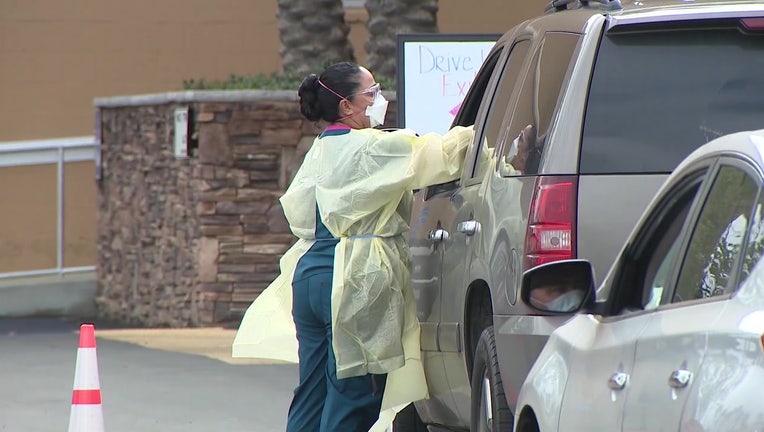Arizona reports big two-day COVID case surge, 174 deaths

PHOENIX (AP) — Arizona reported 6,043 additional confirmed COVID-19 cases and 174 virus deaths Saturday as the pandemic’s latest surge maintained its grip on the state.
The new cases add to the 5,236 reported Friday and are just the second time the state has seen more than 5,000 cases on two consecutive days since January’s winter surge.
The state’s COVID-19 dashboard shows 2,697 COVID-19 patients occupied hospital inpatient beds as of Friday, just below the current surge’s high of 2,714 the day before. Just 5% of inpatient beds in the state’s crowded system were available Friday, according to the dashboard.
The increase in cases likely reflects continued vaccination resistance and more people getting tested following Thanksgiving gatherings, said Will Humble, a former Department of Health Services director who has been a critic of the state’s handling of the pandemic.
MORE: How to sign up and schedule a COVID-19 vaccine appointment
He said a lack of statewide vaccination and masking requirements, particularly in schools, is coming home to roost, resulting in crowded and stressed hospitals and continued fatalities.
"It’s too late for the intervention at this point," said Humble, now executive director of the Arizona Public Health Association. "At this point I kind of just throw my hands up."
Asked for comment on Saturday’s large number of new cases and deaths, Department of Health Services spokesperson Steve Elliott said it’s "not productive" to attach significance to particular daily reports that for various reasons may not reflect trends.
According to Johns Hopkins University data, Arizona’s seven-day rolling average of daily new cases dropped over the past two weeks, decreasing to 3,324 on Thursday from 3,685 on Nov. 18.
However, Arizona’s reports of additional cases increased each of the last five days and the latest Johns Hopkins rolling average didn’t yet reflect the numbers from Friday and Saturday.
The latest Johns Hopkins rolling average of new virus deaths in Arizona decreased over the past two weeks, dropping to 31.4 on Thursday from 40.9 on Nov. 18. That cutoff meant the rolling average didn’t include the 174 deaths reported Saturday.
Humble said the state could help small, independent hospitals that lack capacity to treat critically ill patients with non-COVID-19 conditions by opening up the state’s surge line that arranges transfers of virus patients to hospitals with space.
"There’s no room at the inn," he said. "It’s really a bad time for someone to get a stroke or a heart attack."
Tips
To protect yourself, wash your hands well and often, keep them away from your face, and avoid crowds and standing close to people.
And if you do find yourself showing any of these flu or coronavirus symptoms - don't go straight to your doctor's office. That just risks making more people sick, officials urge. Call ahead, and ask if you need to be seen and where.
In order to protect yourself from a possible infection, the CDC recommends:
- Avoid close contact with people who are sick.
- Avoid touching your eyes, nose, and mouth.
- Stay home when you are sick.
- Cover your cough or sneeze with a tissue, then throw the tissue in the trash.
- Clean and disinfect frequently touched objects and surfaces using a regular household cleaning spray or wipe.
- Cover your mouth and nose with a cloth face cover when around others
- Wash your hands often with soap and water for at least 20 seconds, especially after going to the bathroom; before eating; and after blowing your nose, coughing, or sneezing.
- Monitor your health daily
Related Stories:
- Arizona couple speaks out after learning man passed COVID-19 onto his pets
- Omicron variant: Pfizer running ‘neutralization tests’ with its COVID-19 vaccine
- Omicron variant: CDC expands COVID-19 booster recommendation to all adults 18 and older
Tune in to FOX 10 Phoenix for the latest news:
Get the latest coronavirus news by downloading the FOX 10 News App. Our promise is that our alerts are there to inform you - not scare you.

